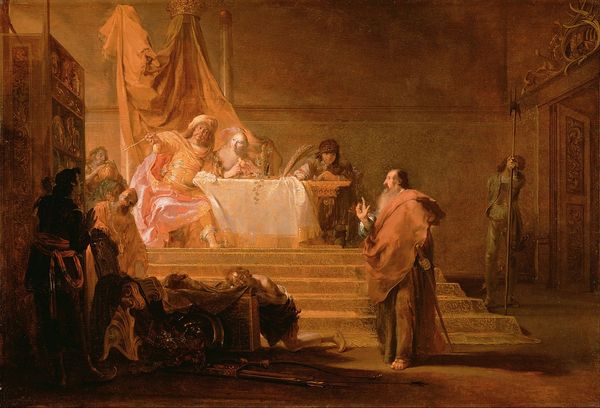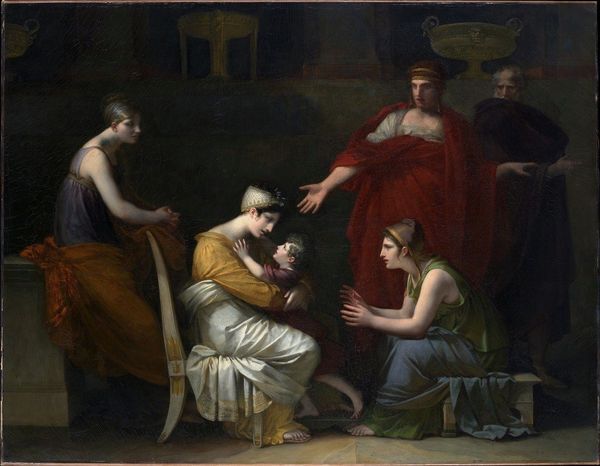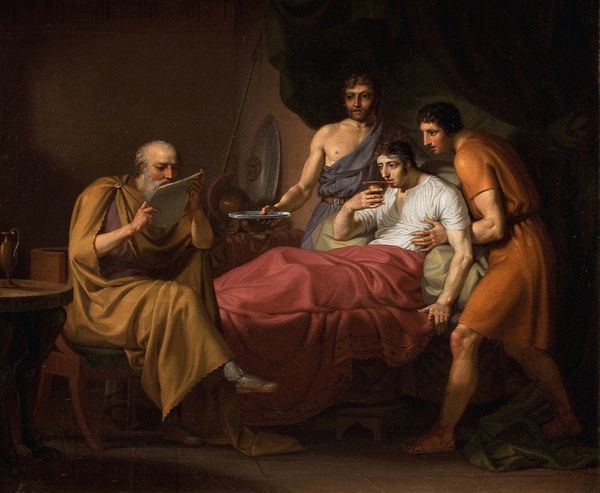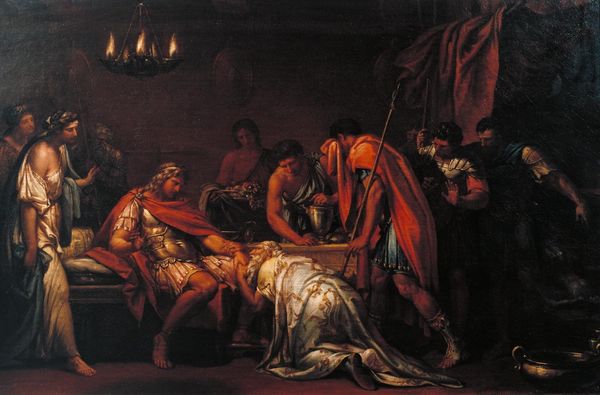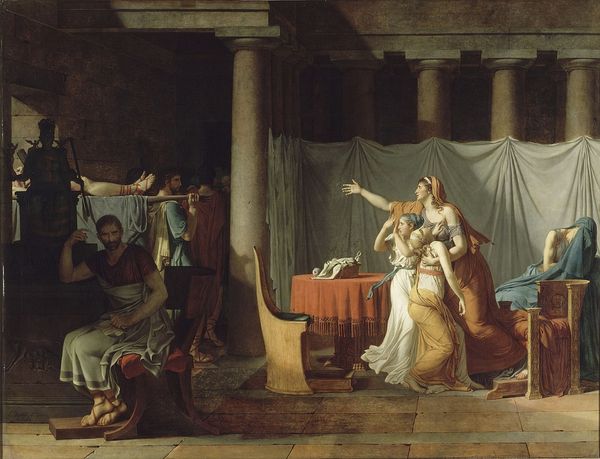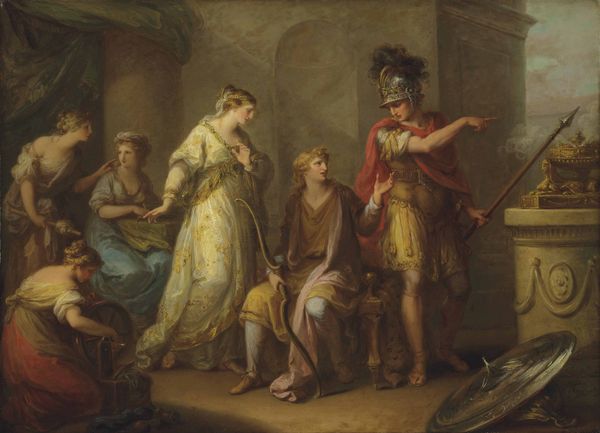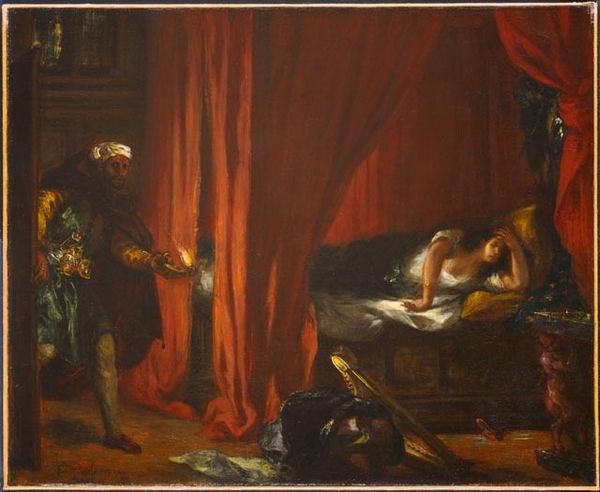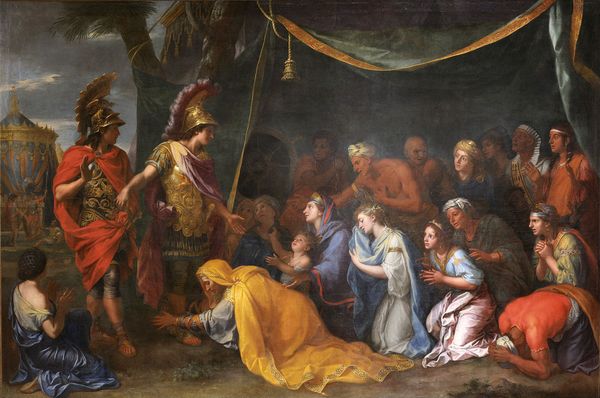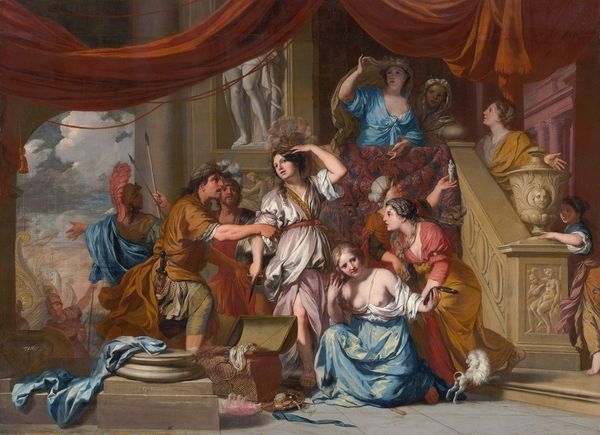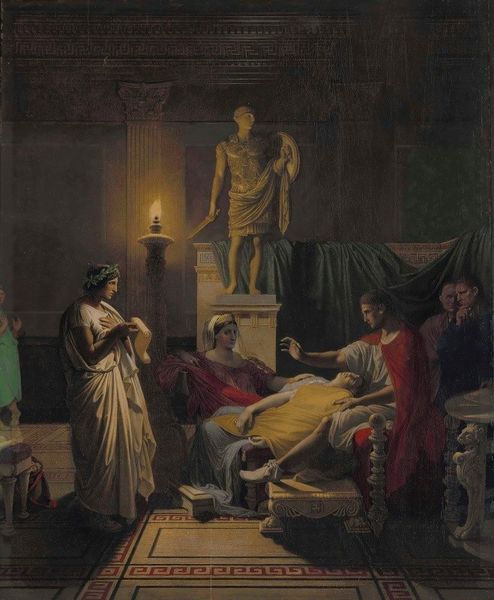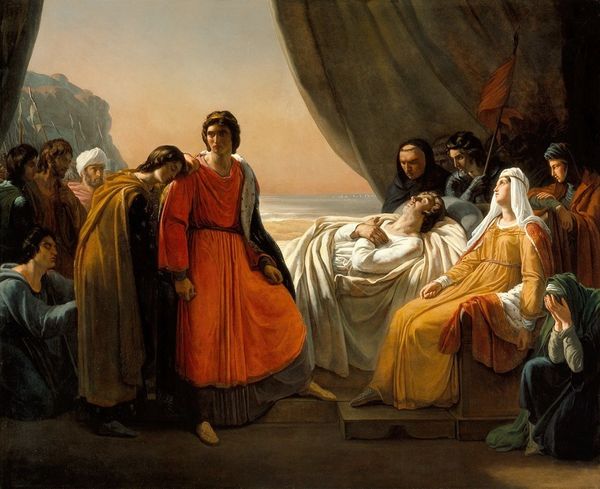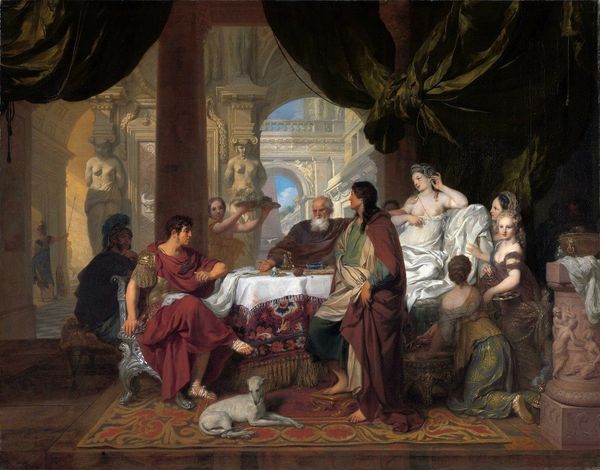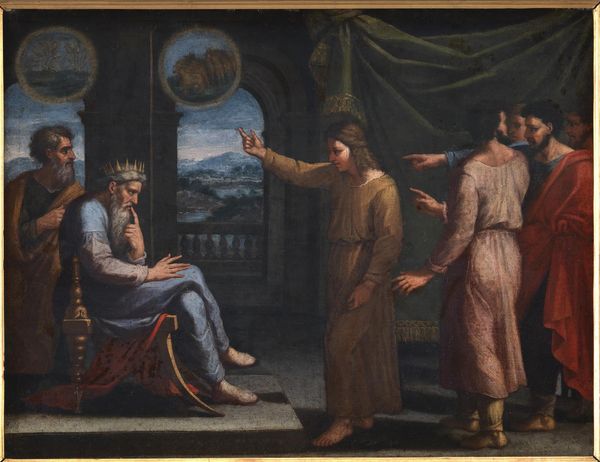
painting, oil-paint
#
neoclacissism
#
painting
#
oil-paint
#
figuration
#
oil painting
#
mythology
#
history-painting
Copyright: Public Domain: Artvee
Curator: Let's discuss this oil-on-canvas painting, "Erasistratus the Physician Discovers the Love of Antiochus for Stratonice," created in 1772 by Benjamin West. My first impression is one of restrained drama. The pallid figure on the bed, the worried expressions… it feels like a stage tableau. Editor: Immediately, I notice the layering of textures – the smooth skin of the figures juxtaposed against the heavy drapery and the sheen of the probable silk. What implications do those choices have? How was the pigment applied to evoke that difference? Curator: The entire scene depicts a rather revealing moment. The physician, Erasistratus, is diagnosing Prince Antiochus' lovesickness, realizing that his patient’s ailment stems from a forbidden desire for his stepmother, Stratonice. Observe the clear visual distinction – Stratonice's vibrant robes versus Antiochus' languid pallor reflecting inner turmoil. Editor: The artist uses that color contrast so carefully, but tell me more about the manufacture. It seems the crimson and gold dyes would have been precious, costly commodities themselves, reinforcing the opulence of the setting and underlining the family’s great privilege, correct? Curator: Precisely. And that royal association would’ve resonated profoundly with the painting’s original 18th-century audience, steeped in classical stories celebrating stoicism. Consider how Antiochus' internal struggle is subtly mirrored by the carefully constructed composition itself, channeling very clear narratives. West uses classical symbols very consciously. Editor: Thinking about materials in their time really shifts things. Oil paint enabled a certain blending and realism that affected perception. The narrative being conveyed has direct ties to labor and resource access; considering such art historical paintings from the perspective of process is not only important, but also relevant. Curator: Looking closely, the narrative pulls from ancient histories of devotion and internal suffering. What I find intriguing here is how West utilizes these classical ideals to present a nuanced picture of psychological turmoil, using recognizable visual shorthand for an audience already familiar with the myth. Editor: Yes. Focusing on the pigment choices offers context of societal pressures: that production chain would shape perceptions of class, religion and gender roles! Curator: I see West as consciously using the symbolic language available to him – classical composition, allegorical figures – to invite his viewers into a world of ethical dilemmas and unspoken desires. Editor: From a materialist view, investigating the paint layers might tell us more about this specific cultural consumption—the social conditions are visible right on the canvas.
Comments
No comments
Be the first to comment and join the conversation on the ultimate creative platform.
